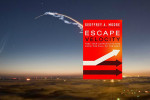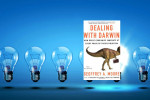Low-End and New-Market Disruption

Investors and equity markets demand increasing levels of growth from companies, but very few companies can sustain or repeat the level of expected growth. Innovation is the answer to this expectation, but the processes that move new products and services to market often result in improved offerings for existing customers. This opens the door for disruption from down-market competitors.
The Innovator’s Solution: Creating and Sustaining Successful Growth by Clayton Christensen
The innovation challenge
The Innovator’s Solution
begins with a challenge: “there is powerful evidence that once a company’s core business has matured, the pursuit of new platforms for growth entails daunting risk”. Christensen asks how growth is achieved and what stands in the way of successful companies extending their lifespan.
More troubling is that “if you fail once to deliver [growth], the odds that you ever will be able to deliver in the future are very low.” However, in the face of all this bad news, Christensen maintains that innovation isn’t a black box and it isn’t unpredictable. He asserts that the theory of disruptive innovation, which says that incumbents can be undermined by “good enough” competitors because managers are compelled and incentivized to invest in their most profitable customers. This phenomenon causes them to retreat upmarket while they slowly lose market share from the low-end. Christensen “summarizes a set of theories that can guide managers who need to grow new businesses with predictable results–to become disruptors rather than the disruptees…”
Managing innovation
Few technologies or business ideas are intrinsically sustaining or disruptive in character. Rather their disruptive impact must be molded into strategy as managers shape the idea into a plan and then implement it.
Incumbents typically win when competition relies on selling better products for more money to existing customers; however, when trying to sell a less expensive, more convenient product or service to a new or previously unprofitable customer segment, new entrants are likely to be successful. The first case, sustaining innovation, offers better performance than previously available and is aimed at demanding, high-end customers. As Christensen puts it, sustaining innovation “entails making a better mousetrap.” The second case, disruptive innovation, introduces products and services that do not offer the same level of performance as currently exists in the market but are easier to use, less expensive, and more convenient.
Disruption has a paralyzing effect on industry leaders. With resource allocation processes designed and perfected to support sustaining innovations, they are constitutionally unable to respond.
Christensen reviews the steel mill case study from The Innovator’s Dilemma and illustrates how incumbent firms willing gave up slices of low-market segments to disruptive minimills in succession until there was nothing left. The incumbent players asked themselves “should we invest to protect the least profitable end of our business, so that we can retain our least loyal, most price-sensitive customers?”, they predictably answered “no” and gave that segment up to the minimills who slowly advanced bottom-up to dominate the industry.
Disruption works because it is much easier to beat competitors when they are motivated to flee rather than fight.
In The Innovator’s Solution Clayton Christensen takes the disruptive innovation framework he developed in The Innovator’s Dilemma one step further by defining two types of disruptive innovations: Low-End and New-Market. New-Market disruptions are those that complete with “nonconsumption” because they are “so much more affordable to won and simpler to use that they enable a whole new population of people to begin owning and using the product, and to do so in a convenient setting.”
The personal computer and Sony’s first transistor radio are two examples of disruptive innovation because both products were introduced to entirely new consumers–those who had not previously had any access to computing power or radios. Low-End disruptions such as steel mini-mills and Asian automakers work by entering the market as a “not good enough” solution to products and services that are being offered by incumbent providers. Christensen says that these two types of innovation can be used simultaneously by the same firm. Southwest Airlines provided both an alternative to established carriers (low-end disruption) and targeted people who were not currently flying (new-market disruption).
Three types of disruption
Christensen gives three sets of questions as a test for disruption:
New-Market Disruption
Is there a large group of potential customers who have not historically had the resources to do this thing for themselves and have gone without it or have needed to pay someone else to provide it to them?
To use the current product or service, do customers need to go to an inconvenient, centralized location?
Low-End Disruption
At the low end of the market, are the customers who would want to purchase a product with less, but good enough, performance if they could pay a lower price?
Can a business model be created which allows for attractive profits at the price needed to win the business of these customers?
Fully disruptive
Finally, he asks “is the innovation disruptive to all the significant incumbent firms in the market?” If the innovation is sustaining to any one of the established players, the odds are that company will more successfully implement it than a new entrant.
Three approaches to creating new-growth businesses
Sustaining Innovations
Aimed at the most profitable customers who are willing to pay for better performance, these improve or maintain profit margins by enhancing existing business processes and cost structures in order to make the best use of current competitive advantages.
Low-End Disruptions
The target here are overserved (relative to performance) customers at the low end of the mainstream market. This type of disruption uses a new operating approach or benefit to achieve good returns at the discount prices required to win over these segments.
New-Market Disruptions
This hybrid approach combines lower performance in “traditional” attributes, but improved performance in new attributes such a simplicity or convenience. This type of disruption targets non-consumption: customers who have not had access to the features and functions due lack of money or skill. The business model must work with low production and sales volumes.
Disruptive Innovations
It appears as if non-consumption is a small market, but in reality it is huge
In the video above, Christensen describes two dynamics that play a role in disruptive innovations. First, there is share price, which includes not only a discounted present value of cash flows that are forseeable from the existing businesses in a company, but also “a bet that investors are making that management team will make new growth”. Therefore, if a company achieves the expected growth from its core business and matches the growth that investors have predicted from its new innovations, “the reward from that will be that your share price doesn’t move.” Since future growth is already discounted into the share price, the company needs to keep surprising investors on the upside (investors will say “omigosh, there is more growth there than we thought.”).
Investments in disruption almost invariably create market returns that are way above what the stock market on average does
The reason that disruptive innovations are so profitable is that just as incumbents underestimate the power of down-market competitors, so does Wall Street. He then defines two types of disruption: low-end and new market.
Low-end disruption occurs when the market leaders produce products that are more than good enough for the bottom and middle of the market. Low-end disruptions are low-cost business models which do the same thing as leaders but cheaper. Walmart was a low-end disruptor relative to up-market high cost department stores.
New market disruptions provide a simplifying technology that a whole new set of customers can use. For example, the personal computer made it affordable and simple to compute and execute calculations that were previously the exclusive domain of mainframes. New market disruptions are competing against non-consumption by making things easy and affordable. Transistors which were initially used in Sony portable radios is an example of a new market disruption because they served a market (teenagers) which was not buying radios because there were none available. Teenagers were happy to put up with low quality since their alternative was nothing. Sony then slowly worked its way up-market and displaced existing electronics companies. Incumbents were well aware of transistor technology and made significant investments in attempting to deliver it to their existing markets.
they got killed because they were unwilling or unable to create a new business model that had a different cost structure to be able to compete successfully against non-consumption
Christensen says the key to success is realizing that non-consumption is many markets is huge even if it appears small. He gives the example of solar panels. In North America where energy requirements are vast, solar power cannot sustain the massive needs of homes with air conditioning and multiple electronic devices. On the other hand, in Mongolia, where many people do not have access to electricity at all (non-consumption), low-cost solar-powered TVs can sell well because they are “good enough” for a market with a very different set of expectations and needs.






